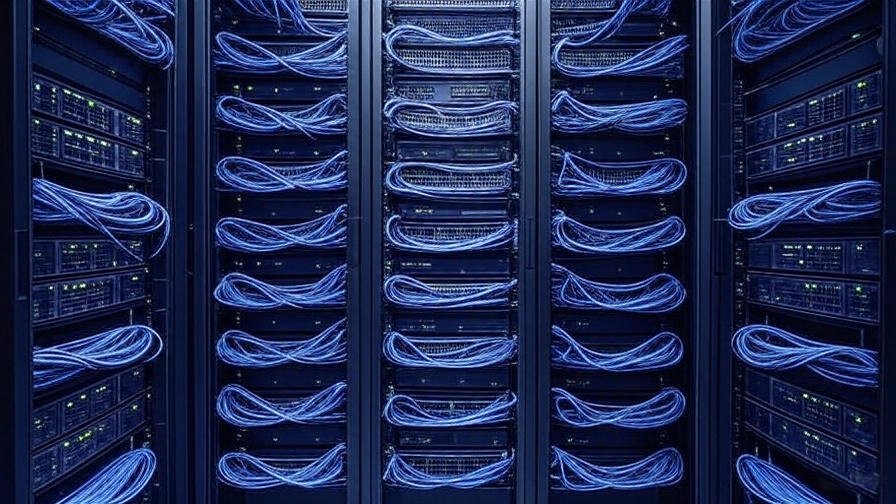What is a Rackmount Server and What Are Its Applications?
A Rackmount Server, also known as a rack server, is specifically designed to be installed in standard data center racks or server rooms. These servers are engineered to occupy minimal horizontal space and allow for an organized arrangement, facilitating easy management and expansion of the IT infrastructure. This article will delve deeper into rackmount servers’ features, advantages, and applications.
What is a Rackmount Server?
A rackmount server, also known as a “shelf server,” is a system designed for installation within a rectangular structure called a rack. This type of server is built to save space, increase scalability, improve cooling through dedicated systems, and simplify maintenance. By providing a structured and organized setup, rackmount servers enable better equipment management and rapid expansion of IT infrastructure.
Like other server types, rackmount servers deliver various data and services to users. These devices are commonly employed in data centers, where dozens or even hundreds of racks and cabinets host multiple servers. Robust rackmount servers are crucial in military and industrial applications, demonstrating reliable performance even in harsh environmental conditions. These servers are designed and certified according to stringent standards to withstand extremely low or high temperatures, severe vibrations during transport, and high humidity. In military applications, rackmount servers are typically housed in specialized, military-standard certified rackmount cases and sometimes play a significant role in embedded computing systems.
Types of Rackmount Servers
Various rackmount servers are designed to meet the diverse needs of businesses and data centers. Each of these servers possesses unique features and applications. Below, we introduce five common models of rackmount servers:
1. Standard Rackmount Server
The standard rackmount server is the most common type and is available in various sizes and configurations. These servers are typically used for file serving, web hosting, and email services. Due to their affordability and ease of management, standard rackmount servers are a popular choice for small and medium-sized businesses.
- Related Examples: data center server, enterprise server
2. High-Performance Rackmount Server
Known as High-Performance Servers, these rackmount servers are designed for demanding workloads such as scientific computing, professional video editing, or gaming. They have powerful processors, ample memory, and fast storage. Although they are more expensive than standard types, they offer significantly superior performance.
- Related Examples: enterprise server, data center server
3. Blade Servers
Blade servers are a type of rackmount server characterized by their compact and high-density design within a server chassis. These servers feature multiple server modules sharing a standard chassis, making them highly suitable for data centers with space constraints. While blade servers are more expensive than standard rackmounts, their optimized power consumption and cooling make them more cost-effective in the long run.
- Related Examples: blade server, server chassis
4. Storage Servers
Storage servers are designed to store large volumes of data. This type of rackmount server is typically equipped with many hard disk drives or solid-state drives and RAID controllers to ensure data security. The primary applications of these servers are backup, data archiving, and data management.
- Related Examples: data center server, enterprise storage server
5. Appliance Servers
Appliance servers are pre-configured rackmount servers to perform specific tasks, such as firewalls, web filtering, or email management. They are exceptionally easy to install and manage, making them ideal for businesses without a large IT team.
- Related Examples: security appliance, email appliance
Rackmount vs. Tower Servers: A Fundamental Distinction
While rackmount servers are expertly engineered for the dense, organized environments of data centers, another ubiquitous server type, the tower server, offers a distinctly different approach. Resembling a conventional desktop computer with its upright, freestanding casing, tower servers are often the preferred choice for smaller businesses, branch offices, or specific departmental applications where dedicated rack space isn’t readily available or economically justifiable. Unlike their rack-mounted counterparts, which are built for efficient vertical stacking and centralized management within a rack cabinet, tower servers operate as independent units.
This standalone design often translates to simpler, more straightforward deployment for less complex IT needs. However, this independence comes with certain trade-offs: tower servers generally offer less scalability in terms of adding more compute power or storage within a single unit, and they lack the centralized cooling, cabling, and power management efficiencies inherent in a rack system. Understanding this fundamental distinction is key to selecting the appropriate server infrastructure for various operational scales and environmental constraints.
Applications of Rackmount Servers
Thanks to their compact design, high processing power, and high reliability, Rackmount servers find applications in various fields such as business, industry, and even military sectors. Rackmount servers are not limited to data centers; these servers perform exceptionally well even in harsh conditions.
Usage in Data Centers and Enterprises
Rackmount servers are used in data centers and various organizations for tasks like web hosting, data storage, network management, and providing cloud services. Since these servers occupy little space and are easily managed, the best rackmount server for these environments is a model that offers good power, appropriate energy consumption, and a reasonable price.
Usage in Various Industries
Rackmount servers play a vital role in large industries such as oil and gas, automotive, telecommunications, and manufacturing. These servers process large volumes of data, control automated systems, and store sensitive information. Their high resistance and durability ensure stable performance in challenging industrial environments.
Application in Military Projects
One of the most crucial applications of rackmount servers is in military projects. In this domain, servers must withstand severe vibration, extremely high or low temperatures, dust, and humidity. For this reason, many rackmount servers are built according to stringent standards such as MIL-STD-810H, MIL-STD-461, FCC, CE, and DO-160. These standards guarantee that the server will operate without issues even under the harshest conditions. The best rackmount server for military applications is a model with these certifications and a robust design.

How Rackmount Servers Function
Rackmount servers are designed to provide high efficiency in both mechanical and computational aspects. Mechanically, rackmount servers can easily slide in and out of the server rack. This feature allows system administrators, technicians, and operators to inspect and repair faulty components without shutting down or dismantling the entire system. Such a capability is critical in environments where even a few minutes of downtime can result in financial loss, damage, or life-threatening risks.
Various equipment, such as servers, network switches for the server rack, storage devices, and power management tools, is housed within a network rack. The size of these servers is typically specified in Rack Units (U); for example, a 1U server occupies only one rack unit of space, while a 2U server is slightly larger and takes up two rack units. The choice between these two types depends on the need for processing power, physical space, and heat management.
Computationally, each rackmount server provides specific hardware resources, performance, and services tailored to the system’s needs. For instance, in a remote military installation, racks might house databases, email, files, and web servers to perform critical computations on-site. In contrast, in an industrial oil rig or a commercial warehouse, equipment… (The original article was cut off here, implying a comparison with other industrial settings.)
Key Equipment in a Network Rack
When discussing a network rack, we refer to a standard metal cabinet that securely and systematically houses critical network equipment. One of the most essential components within this rack is the rackmount network switch, which establishes communication between servers, computers, and other devices. Of course, to set up a standard and efficient rack, other essential equipment is also required, which we will mention below:
- Switch: Located at the heart of the network, it is responsible for managing communication between devices. Rackmount switches with multiple ports are installed in the rack.
- Router: This is the gateway connecting the internal network to the internet, and a rackmount router is typically used in the rack.
- Patch Panel: A tool for managing and organizing network cables. All network cables are first connected to the patch panel and then to switches or servers.
- Server: There are various types of Rackmount Server, Blade Server, or even a Small Business Server. The choice of server type depends on project requirements, number of users, available space, and budget. The advantages and disadvantages of each should be considered in this selection. For example, rackmount servers are independent but occupy more space compared to a rack server versus a blade server. In contrast, blade servers are housed in a shared chassis, optimizing power consumption and space.
- Firewall: A vital security device that controls incoming and outgoing network traffic and blocks potential threats. Rackmount firewalls hold a special place in the network rack.
- Uninterruptible Power Supply (UPS): An emergency power device that automatically supplies power to equipment inside the rack during a power outage, preventing sudden shutdowns of servers and switches.
- KVM Switch: This device allows a network administrator to simultaneously manage multiple servers within the rack through a single monitor, keyboard, and mouse. A KVM Switch simplifies management and saves space, especially when the number of servers is high.
Note: When choosing the appropriate server for a network rack, an organization’s needs, foresight in network expansion, and, of course, the disadvantages of rackmount servers should be considered. While these servers are popular and widely used, they have higher power consumption, require more space, and need a stronger cooling system than other models. On the other hand, Small Business Servers are an economical and suitable option for small companies that need a server with basic functionalities in a rack.

Conclusion
Rackmount servers, with their organized design and easy upgradeability, are an excellent choice for data centers and large-scale operations. They come in various models and sizes, allowing for customization based on specific needs. Centralized management, space efficiency, and enhanced security are among the significant advantages these servers offer.
However, alongside these benefits, some limitations need consideration. High initial costs, substantial heat generation, and the requirement for specialized maintenance are key challenges associated with rackmount servers. Nevertheless, these servers remain a reliable option in environments where security and scalability are paramount.



